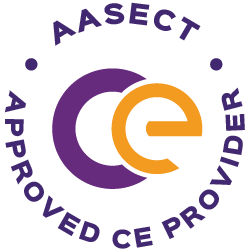2020 has been a challenging year for all of us running sex coaching businesses. The worst-in-a-century emergence of a global pandemic has necessitated quarantines and social distancing measures around the globe. We’re experiencing uncertainty about the future and it can feel difficult to plan.
The uncertainty is even more acute if your sex coaching business is built around in-person offerings—client sessions, intensives, VIP days, workshops, or retreats, among others. Will you be able to run your blockbuster offering this fall? Should you go ahead and book your venue space?
Perhaps you’re still a student and wondering how in the world you can launch a sex coaching practice in this new reality?
To be frank, none of us can predict the future. At this moment, it is impossible to say whether or not in-person events will begin making a comeback later this year or not.
However, the uncertainty doesn’t mean you’re powerless. Quite the contrary—you’re blessed to run your business at a time when our world is more interconnected than ever. If you are reading this essay, you have a connection to the internet.
And, with a connection to the internet, you have the opportunity to adapt. You have the opportunity to pivot and take your practice and your offerings online.
Maybe, on some level, you’ve been thinking about doing exactly that. Perhaps you’ve already scoped out the software you would need. You may have attended a couple of other virtual events, to get a feel for what they are like.
The Importance of a Safe Digital Container
And still, something stops you. You may wonder: How will I hold space for my clients online? Is it possible to create a coaching container when our interactions are mediated by a screen? Isn’t that a little… cold?
These are important questions. If we are moving our work online, it’s as important to create a safe and powerful container as it is when working in person. In fact, many elements don’t change all that much—we still set the frame for the work, listen deeply for that which remains unspoken, uphold our clients’ autonomy, and hold the bar high for our clients’ highest good.
That said, some elements to creating a container do shift and change when working online. In each case, with some small adjustments, you will be able to create powerful space on the web.
Confidentiality

Photo by Anna Shvets from Pexels
Perhaps the greatest challenge to creating a safe container online is the issue of client confidentiality and privacy. All digital communications are susceptible to interference. However, you can take measures to mitigate some of this risk.
Reassure your clients at the beginning of the work that you are in a private space where others cannot see or hear the session. Spend a couple of moments describing your work environment.
Look into the security and privacy terms and conditions of any software you use to deliver your service. Does the service provider habitually record calls, for example, in order to train voice recognition AI? Does the app claim to be HIPAA-compliant? Does the service provider trade off ease of use against greater vulnerability to unauthorized access? Generally, apply additional critical consideration to any tools that are available for free, though paying for software does not guarantee any standard level of privacy.
Two options you might consider that have excellent privacy and security reviews are Jitsi Meet for video conferencing and Signal for text-based communication.
Communication
Plan to spend additional time communicating with your client to help put them at ease with the transition online. You may need to create clear instructions for how to join your virtual session or event, as your clients may have varying degrees of online fluency. You may wish to describe to your client if something is taking place off screen, for example, if you are taking notes, which may explain why you look occasionally to the side to write.
Body language remains important in virtual work. Make sure the space you are working in is well-lit. Learn where your camera is located, and make sure to look at the camera when you wish to be looking directly at your client. You can place a sticker or PostIt note near your webcam, to remember where to look. If you wish to use your hands to communicate, be sure to place your webcam so that they can be seen. Spend time before your session or event testing your video settings.
If you are doing group work virtually, decide in advance what the communication etiquette will be and communicate this clearly up front. One common approach is to mute all participants, and ask them to use the software to raise their hands or send a message in chat indicating when they would like to speak. You may also consider asking group members who are on the go to switch off their video, to avoid the visual distraction of a moving, jittery camera.
Technological Challenges
Assume that you will face technological challenges, and build this into your session or event timing. It is normal for it to take a moment for audio and video connections to be established. Sometimes, technology needs to be reset. Sometimes, technology will fail.
You create a safe digital container for your clients by being prepared in the event of a tech hiccup. Know what your backup method of communication will be if a technology fails. Practice troubleshooting common issues.
Have patience if a client’s audio or video becomes choppy. It may help to switch off video if the connection is slow. When the connection is reestablished, mirror to the client the last portion of the conversation before the interruption and help to guide the client back to the work.
You may also face occasions where a client’s internet connection drops out. Know in advance how you will reach out to them if this is the case and agree on this in advance. For example, you may agree to text them if you lose each other, to assist with getting reconnected.
In all instances of technological challenge, have compassion for your client and for yourself. It can be jarring when this happens, and it can take a moment to transition back into the work. When you remain calm, you help your client to do the same. Remember—it took time for you to develop the skills to help guide the client back to their goals with pivotal questions, and so returning to the coaching conversation after a technical glitch is also a skill that requires practice.
Boundaries
With a move online, you may notice a need for new sorts of boundaries in order to maintain the integrity of your container.
For example, when working in person, you may have asked for payment at the time services were offered. What happens when working online where there’s a lag with online payments?
You may feel highly skilled at maintaining time boundaries during an in-person session, but be wondering what to do when a technical glitch happens. Do you extend the session?
Or, in person, you would never allow another person to pass through your coaching room while coaching is in session, but your client is sheltering in place and their children are moving around the same room. What do you do?
When you notice the need emerge for a new boundary, make a note of it, and spend some time considering what you need in order to effectively hold space and be present for your client. Then, map out what your new boundaries will be, and communicate these in advance.
For example, you might decide that payment is required in advance before someone can work with you online. You may decide that you will allow up to 10 minutes of leeway for technical challenges, and that clients need to be sure they will be working from a location with a stable internet connection. You may decide you are only able to work with a client when others are present if they wear headphones.
It’s a Gift

Photo by Ketut Subiyanto from Pexels2
Transitioning our work online can feel daunting at first. Always remember that you are a highly trained, competent, skilled sex coach, and these attributes remain the most important to creating a powerful and transformative journey for your clients.
And, at the same time, by paying attention to some of the specific aspects of moving your work online, you have the opportunity to strengthen your practice and provide a high quality and contained experience. By creating an adaptable and agile practice, you will be ready to confront any challenges in the world as they emerge. If you’re an aspiring sex coach, still completing your studies, you have the gift of time to plan your practice around these considerations.
Continue the Conversation
Curious about training to become a Certified Sex Coach™? Join the next live Info Session to meet the SCU team and participate in a live Q&A!







